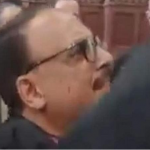By The NewYork Times –
An Ethiopian rebel group massacred more than 200 members of the Amhara ethnic group on Sunday, according to officials and news reports, the latest atrocity amid a civil war that threatens to tear apart Africa’s second-most-populous nation.
Witnesses and officials told The Associated Press that at least 230 people were killed when members of the Oromo Liberation Army attacked Tole, a village in Oromia, Ethiopia’s largest region.
The Oromo Liberation Army, a rebel group known as the O.L.A. that is designated as a terror organization by the Ethiopian government, denied carrying out the killings and said they were committed by a militia aligned with the regional government supporting Prime Minister Abiy Ahmed.
The attack was among the worst ethnic violence to roil the country since November 2020 when the government and its allies began trying to suppress a rebellion that began in the northern region of Tigray.
The Tigrayans, an ethnic minority that long held outsized political power in the country, revolted against efforts by Mr. Abiy to do away with the country’s system of ethnic federalism.
The conflict soon exploded into a civil war, cleaving the country along ethnic lines and leaving thousands dead and injured and millions hungry and displaced. Fighters on both sides of the conflict have committed war crimes, including ethnic cleansing, mass killings and sexual violence.
As the war has dragged on, human rights groups have documented various transgressions — including extrajudicial killings and attacks on refugees — that have been carried out by both government forces and the Tigray People’s Liberation Front.
“The Abiy regime is again blaming the O.L.A. for atrocities committed by its own retreating fighters,” Odaa Tarbii, the international spokesman for the rebels, said in a statement posted on Twitter. The O.L.A., which joined forces with the Tigrayans against the government, has previously been accused of targeting civilians and government officials.
The Oromia regional government held the O.L.A. responsible, too, saying in a statement that the group “killed people and destroyed property” because it “couldn’t withstand the operations launched against it by security forces.”
In late March, Ethiopia’s government announced a “humanitarian truce” in Tigray, just weeks after it lifted the state of emergency provisions that were used to round up people of Tigrayan descent. But there have been few concrete steps toward ending the conflict in the landlocked nation of 115 million people.
Mr. Abiy has also faced challenges consolidating power among myriad ethnic groups. This has particularly been true of the Amharas, who are the country’s second-largest ethnic group. In recent weeks, authorities have arrested thousands of people in the Amhara region, including members of the Fano militia who were instrumental in helping Mr. Abiy fight the war in Tigray.
At least 13 journalists have also been arrested in the Amhara region, leading the Committee to Protect Journalists to warn that the government was “spreading fear and engendering self-censorship among journalists who’ve seen far too many of their colleagues thrown behind bars in recent weeks.”
Last week, Mr. Abiy announced the establishment of a committee to negotiate peace with the Tigrayans. Among the thorniest issues likely to be discussed is the question of West Tigray, an area that both Amharas and Tigrayans claim as their own.
But as the committee deliberates what is up for negotiation, worries persist about heightened interethnic animosity.
On Sunday, Daniel Bekele, the chief commissioner for the Ethiopian Human Rights Commission, urged authorities in a post on Twitter to undertake all “necessary measures” to protect civilians. “All law enforcement operation should exercise maximum caution to avoid direct or indirect targeting of civilians,” he said.
___________________



